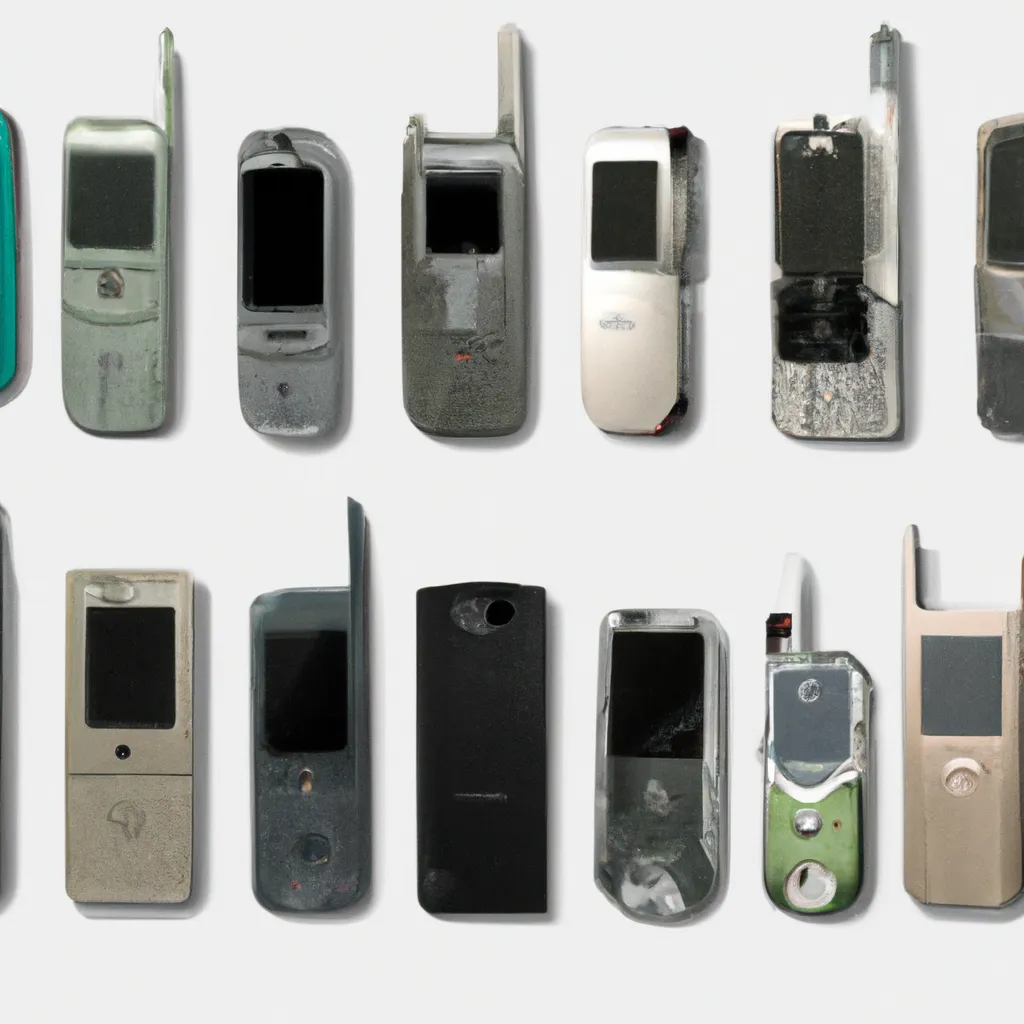Last updated on janvier 10th, 2024 at 04:32 pm
We’ve come a full decade down from the peak of prominence for a well-respected – perhaps even what you could call legendary – Taiwanese smartphone manufacturer named HTC. That wasn’t an exciting name by any means, but the devices that came out of the company helped it become greater than the sum of just the words « High Tech Corporation. » HTC helped to kickstart the entire Android platform, stood out on its own with a polished UI, then a series of pure lacquer One phones, and then fell into obscurity while helping to reshape Google’s approach with the Pixel lineup. We’ve rolled down the tracks of the firm’s history before, but here, we’re focusing on 10 of what we think are the greatest phones to have ever come out of HTC. We won’t be ranking these phones strictly based on merit. Suffice to say that the HTC One M7 and One M8 usually contend among critics for best of all time – and, spoilers, only one is on this list. Instead, we’ll shine the spotlight on phones from three specific (though overlapping) eras and the aspects that made them so notable and even loved. Our « approach » highlights 10 great HTC phones, focusing on their contributions across different eras (early, prime, and for Google) rather than strictly ranking them, to showcase how HTC’s innovations have significantly impacted the smartphone industry. While HTC has immense street cred in the Android realm, we can’t forget that the company was also a prolific name in the Windows Mobile and Windows Phone ecosystems, too. It also had a hand as a white-box manufacturer in kickstarting at least one particular company’s smartphone lineage. Yes, believe it or not, Sony Ericsson left it to HTC to launch what is now solo player Sony’s highfalutin’ Xperia smartphones series – the catch here is the Xperia X1 was highfalutin’ all the way back in 2008. It had an impressive 800 x 480 display, which, on a 3-inch display, brought a level of definition that was fairly rare on a mobile phone. The X1 also sported a keyboard that, according to our testing back in the day, had a « distinct, crisp, and quality sliding action », much like the HTC’s pioneering and satisfyingly clacky Android device, the T-Mobile G1 with Google. And much like the phone that was also known as the « Dream, » the keyboard itself was mushy, cramped, and far from premium. Windows Mobile had a few quirks that device manufacturers tried to smooth over with shortcut buttons or extra layers of software. Unfortunately, the X1’s Optical Joystick was too fiddly to navigate with precision and the D pad-esque controller rocker the joystick was embedded in wasn’t that much better. But Sony Ericsson’s multitasking panels made sense – the overall paradigm hasn’t changed much across time or operating systems – and its media playback apps were so much easier to use than Microsoft’s own. Fifteen years on, and we’re still talking about Sony Xperia Android phones with some enthusiasm and frequency at Pocket-lint. Not so much with HTC anymore, even though it does have new phones out in 2023. In competing against iOS, Android stripped away many of the hardware controls we were used to seeing in Windows phones and enabled some striking candybar designs, including HTC’s very own Hero. While other phones had raised chins, this one was built on a solid Teflon foundation and had some personality to boot. Most importantly, though, was the debut of Sense UI for Android, replete with the combo flip clock and weather widget and the graphical furnishings that covered up some of the barer spots of the base OS and went further in adding themeable elements, too. Android was definitely growing on its own with a lively Android Market of applications and seemingly constant dot-dot version updates, but phones like the Hero and OEMs like HTC helped propel the platform to better features, better looks, and to more people. On hardware alone, the HTC HD2 was known primarily as a chonkster with its market-first 4.3-inch screen, but it was taken on the whole as a competent device in spite of Windows Mobile. But its legacy lives on in the hearts of modders as the phone that could never die. You see, this Windows Mobile 6.5 device was released on the cusp of Windows Phone 7’s launch, but Microsoft ultimately denied the HD2 that update as it didn’t meet a number of what could be argued as arbitrary spec requirements. The company told APC (via Internet Archive) at the time the phone lacked specific feature buttons and other hardware components. It wasn’t a good look for either HTC or Microsoft. What was one to do? Why, they could take charge! The HD2 allowed users to flash ROMs from its microSD card slot, so if you could compile a build that could reconcile your choice of operating system with the phone’s components, you’d be able to use Windows Phone 7, MeeGo, Firefox OS, Linux, even Android all the way up through to version 7.0 Nougat via Cyanogenmod (via Pocketnow) on this unkillable slab. Even to this day, on the forums of our sister site, XDA-Developers, you’ll find tweakers proudly showing off their HD2 running 2009-era Ubuntu. Let it never die. The first few years in the landscape of Android phones saw volleys one month and salvos the next as it became clear that Android would be the leading contender against the iPhone. Product release cycles went lightning fast as manufacturers catered to wireless carriers who were pushing 4G (and the need to buy a new phone) in earnest – this meant the same essential chassis being packaged up in different ways and sold as network-locked « exclusives » to the likes of AT&T, Verizon, Telus, Rogers, Vodafone, O2 – you can insert your own brands here. HTC, however, gradually began narrowing down and refining its product strategy starting in 2012, delivering some of the best material builds it ever put to market. This one may be a little controversial to those who were around for HTC’s first in the One series of phones that would go on to carry the company through the middle of the decade. The 2012 entries consisted of the Nvidia Tegra-powered One X with an unabashedly plastic body, the cost-conscious One V with an aluminium unibody and a lacklustre spec sheet, and, right in the middle, the One S. It, too, had an aluminium unibody, but the rear surface came in two finishes: a black colourway treated with micro-arc oxidation for a granular feel (which was more prone to chipping, according to XDA-Developers forum contributors) and an anodized silver look. While unfortunate, the overall design language of the hardware gave the One S complementary curves in all the right places. While it was a step-down from the One X in prestige, it oozed the best vibes out of the trio. 2013’s One M7 introduced us to HTC’s fully aluminium attitude, but it was the One M8 that added friendlier curves and an added degree of chic that made it plainly irresistible to pocket. BoomSound speakers became a call to fame, and the

